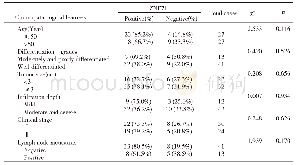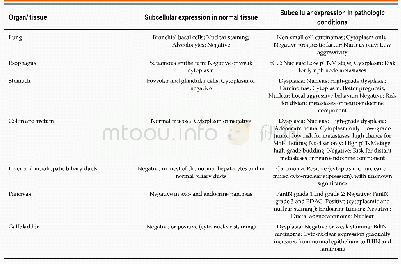《Table 1.The expression and functions of chemokine receptors in mouse DC subtypes》
 提示:宽带有限、当前游客访问压缩模式
提示:宽带有限、当前游客访问压缩模式
本系列图表出处文件名:随高清版一同展现
《Chemokine and chemotactic signals in dendritic cell migration》
Most precursors of DCs leave the bone marrow and enter the circulation to localize to lymphoid and nonlymphoid tissues.In both steady-state and inflammatory conditions,resident,peripheral tissue DCs travel via the lymphatic system to draining lymph nodes,where they interact with T lymphocytes4.Human p DCs are usually found only in the circulation and in primary and secondary lymphoid organs where they are likely to localize in a CXCR4-dependent and Chem R23/CMKLR1-dependent manner.Under pathological conditions,p DCs localize to peripheral tissues,including the skin,some tumors,and atherosclerotic aortas by mechanisms that are possibly dependent on CXCR4,CXCR3,and CMKLR1 expression18,19.In mice under both homeostatic and inflammatory conditions,chemokine receptors such as CCR2,CCR5,and CCR9,regulate the migration of p DCs to lymphoid and nonlymphoid organs,such as the small intestine and skin1\n\t\t\t\t8.To travel such different migratory routes,DCs rapidly change chemokine receptor expression to respond to the chemotactic gradient guiding them to their correct position2\n\t\t\t\t0.A survey of chemokine receptors and their role in the migration of mouse and human DCs is shown in Tables 1 and 2,respectively.
| 图表编号 | XD0010733100 严禁用于非法目的 |
|---|---|
| 绘制时间 | 2018.04.01 |
| 作者 | Laura Tiberio、Annalisa Del Prete、Tiziana Schioppa、Francesca Sozio、Daniela Bosisio、Silvano Sozzani |
| 绘制单位 | D epartment of Molecular and Translational Medicine, University of Brescia、D epartment of Molecular and Translational Medicine, University of Brescia、Humanitas Clinical and Research Institute、D epartment of Molecular and Translational Medicine, University |
| 更多格式 | 高清、无水印(增值服务) |





